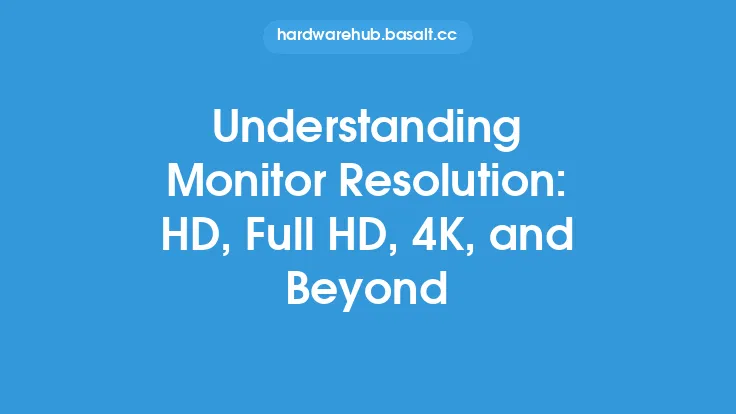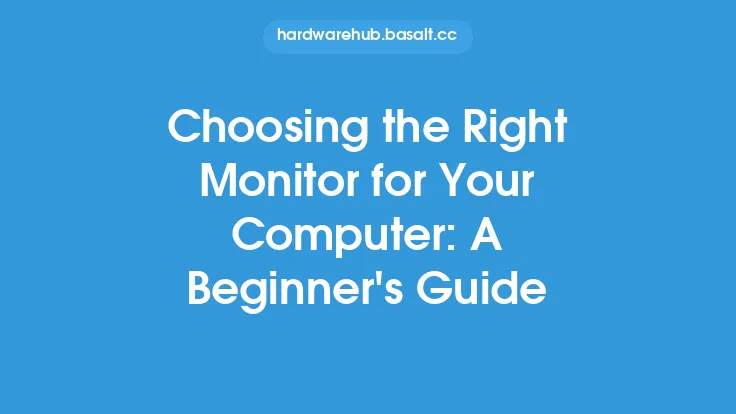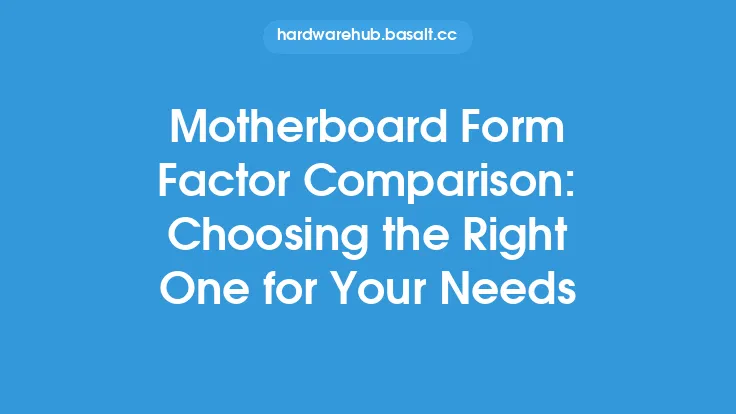When it comes to choosing a monitor, there are several factors to consider, and two of the most important ones are monitor size and aspect ratio. These two factors can greatly impact your viewing experience, productivity, and overall satisfaction with your monitor. In this article, we will delve into the world of monitor sizes and aspect ratios, exploring the different options available, their advantages and disadvantages, and helping you determine what's best for your needs.
Introduction to Monitor Sizes
Monitor sizes are typically measured diagonally, and they can range from as small as 15 inches to as large as 49 inches or more. The most common monitor sizes are 22, 24, 27, and 32 inches. Each size has its own unique characteristics, and the right size for you will depend on your specific needs and preferences. For example, if you're looking for a monitor for general office work, a 22-24 inch monitor may be sufficient. However, if you're a gamer or a graphic designer, you may want to consider a larger monitor, such as a 27 or 32 inch, to take advantage of the extra screen real estate.
Understanding Aspect Ratios
Aspect ratio refers to the ratio of the monitor's width to its height. The most common aspect ratios are 16:9, 16:10, and 4:3. The 16:9 aspect ratio is the most widely used, and it's the standard for most modern monitors. This aspect ratio is ideal for watching movies, playing games, and working with widescreen applications. The 16:10 aspect ratio, on the other hand, is more suited for productivity and office work, as it provides a slightly taller screen than the 16:9 aspect ratio. The 4:3 aspect ratio is an older standard, and it's mostly used for legacy applications and older systems.
The Impact of Monitor Size on Viewing Experience
The size of your monitor can greatly impact your viewing experience. A larger monitor can provide a more immersive experience, especially when watching movies or playing games. However, a larger monitor can also be overwhelming, especially if you're working in a small space. On the other hand, a smaller monitor can be more suitable for small spaces, but it may not provide the same level of immersion as a larger monitor. Additionally, the size of your monitor can also impact your productivity, as a larger monitor can provide more screen real estate, allowing you to have multiple windows and applications open at the same time.
The Importance of Aspect Ratio in Productivity
The aspect ratio of your monitor can also impact your productivity. As mentioned earlier, the 16:10 aspect ratio is more suited for productivity and office work, as it provides a slightly taller screen than the 16:9 aspect ratio. This can be beneficial for tasks such as word processing, spreadsheet work, and browsing the web. On the other hand, the 16:9 aspect ratio is more suited for tasks such as video editing, graphic design, and gaming, as it provides a wider screen than the 16:10 aspect ratio.
UltraWide Monitors: A New Standard
In recent years, UltraWide monitors have become increasingly popular. These monitors have an aspect ratio of 21:9, which is much wider than the standard 16:9 aspect ratio. UltraWide monitors are ideal for tasks such as video editing, graphic design, and gaming, as they provide a much wider screen than standard monitors. They are also suitable for productivity, as they can provide multiple windows and applications open at the same time. However, UltraWide monitors can be expensive, and they may require a more powerful graphics card to run smoothly.
Curved Monitors: A New Trend
Curved monitors are another trend in the monitor market. These monitors have a curved screen, which can provide a more immersive experience, especially when watching movies or playing games. Curved monitors can also provide a wider field of view, which can be beneficial for tasks such as gaming and video editing. However, curved monitors can be expensive, and they may not be suitable for everyone, especially those who wear glasses or have eye problems.
Conclusion
In conclusion, monitor size and aspect ratio are two important factors to consider when choosing a monitor. The right size and aspect ratio can greatly impact your viewing experience, productivity, and overall satisfaction with your monitor. By understanding the different options available, you can make an informed decision and choose a monitor that meets your specific needs and preferences. Whether you're a gamer, a graphic designer, or an office worker, there's a monitor out there that's right for you.





